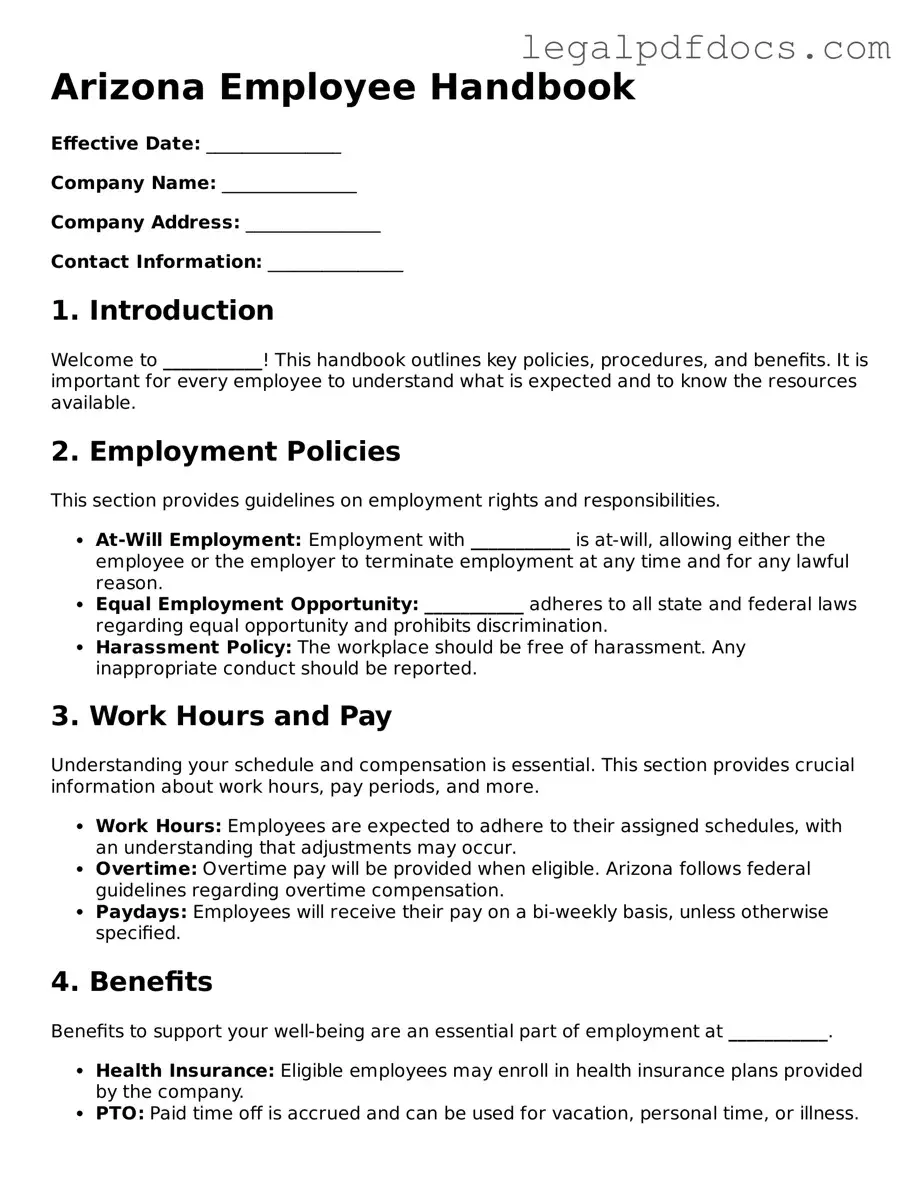Official Employee Handbook Form for Arizona
The Arizona Employee Handbook form is a crucial document that outlines the policies, procedures, and expectations for employees within an organization. This handbook serves as a guide to help employees understand their rights and responsibilities while fostering a positive work environment. Ready to create your own handbook? Fill out the form by clicking the button below.
Open Employee Handbook Editor Here
